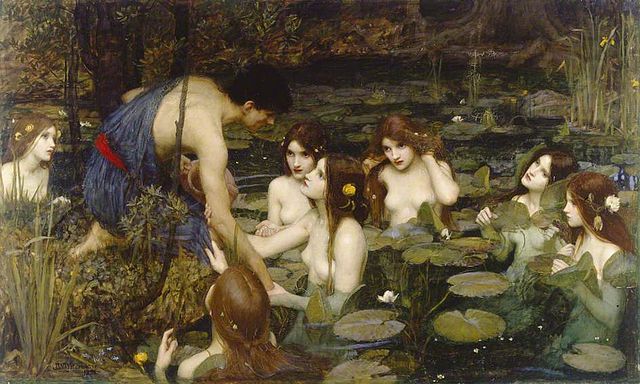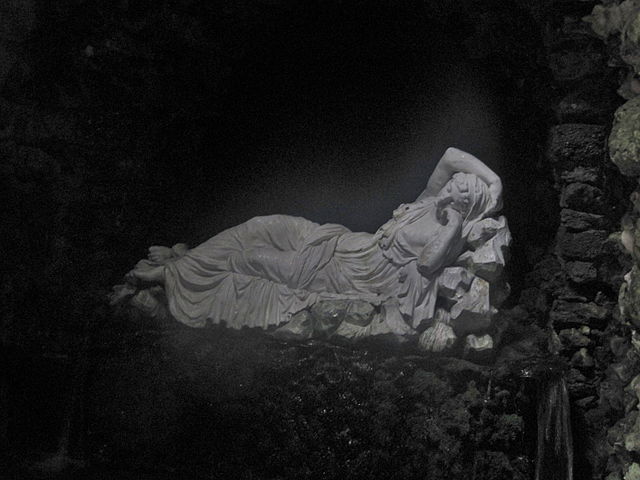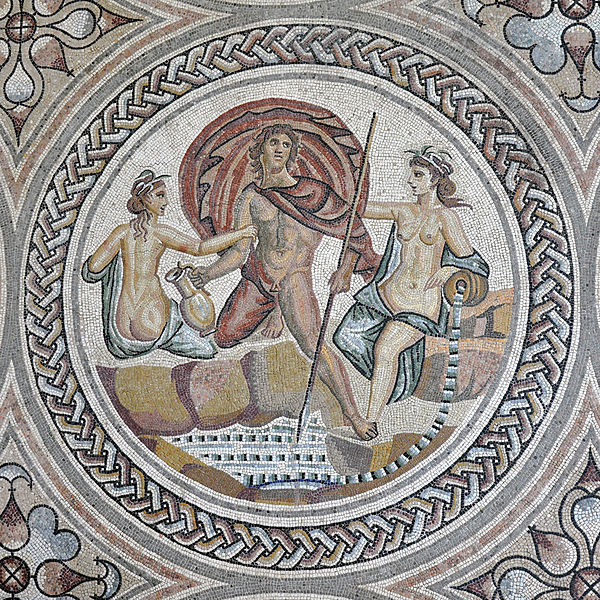Aegina was a figure of Greek mythology, the nymph of the island that bears her name, Aegina, lying in the Saronic Gulf between Attica and the Peloponnesos. The archaic Temple of Aphaea, the "Invisible Goddess", on the island was later subsumed by the cult of Athena. Aphaia (Ἀφαῖα) may be read as an attribute of Aegina that provides an epithet, or as a doublet of the goddess.
Attic red-figure pyxis showing Zeus chasing Aegina
Aegina is waiting for the arrival of Zeus by Ferdinand Bol
Aegina visited by Jupiter by Jean-Baptiste Greuze
Jupiter and Aegina by Jan Goeree
A nymph is a minor female nature deity in ancient Greek folklore. Distinct from other Greek goddesses, nymphs are generally regarded as personifications of nature, are typically tied to a specific place or landform, and are usually depicted as maidens. They were immortal like other goddesses, except for the Hamadryads, whose lives were bound to a specific tree.
Nymph
In this 1896 painting of Hylas and the Nymphs by John William Waterhouse, Hylas is abducted by the Naiads, i.e. fresh water nymphs
The statue of a sleeping nymph in a grotto at Stourhead gardens, England.
Hylas and nymphs from a mosaic in Roman Gaul (3rd century)








